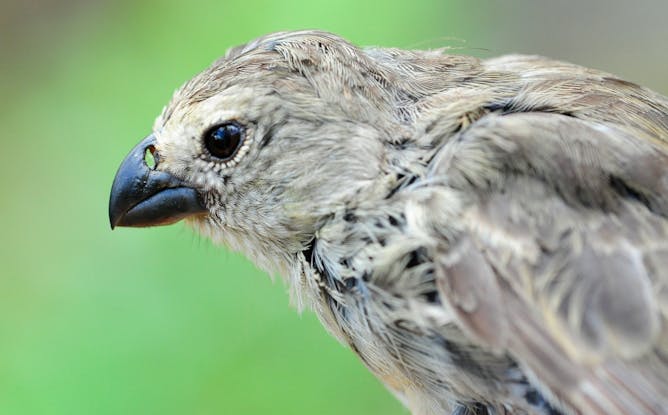|
|
|
Editor's note
|
|
Encrypted messaging apps have become an essential tool for organising protests – like the ones in Hong Kong this past week. Protesters use the apps to organise anonymously, without the threat of surveillance. But spying isn’t the only way the efforts of protesters can be disrupted. As Stanley Shanapinda writes, Telegram was targeted in a cyber attack that flooded its servers during the height of the Hong Kong protests. This slowed down the ability of protesters to communicate, and created a chilling effect on their right to protest.
Technology is a huge part of most of our lives. Even if you don’t use Facebook or YouTube, chances are you’re aware of the storm of issues surrounding the digital giants recently. Data sharing, live-streamed terror, algorithms and fake news: we’re surely coming to the point where better regulation must take place.
Over the next 12 months, our Science and Technology team wants to bring you the latest on the dominance of digital platforms, as well as analysis on Australia’s activities in space and how Homo sapiens emerged from Africa to colonise the world.
At The Conversation, we work with the right experts to tell these stories – but we need your support. Please make a tax deductible donation today.
|
Sarah Keenihan
Section Editor: Science + Technology
|

|
|
Top story
|

Telegram was targeted in a distributed denial-of-service (DDoS) attack during the protests.
Jerome Favre/AAP
Stanley Shanapinda, La Trobe University
Telegram enabled protesters in Hong Kong to evade surveillance, but a DDoS attack and the arrest of a group administrator undermined the ability of protesters to organise and communicate.
|

A Small Tree Finch from the Galápagos Islands with an enlarged nostril caused by a parasite.
Katharina J Peters
Katharina J. Peters, Flinders University; Sonia Kleindorfer, Flinders University
An infestation as a chick leads to enlarged nostrils in the beak of Darwin finches, and that affects their mating call.
|

A fossil of the giant new trilobite species Redlichia rex.
James Holmes
James D. Holmes, University of Adelaide; Diego C. García-Bellido, University of Adelaide; John Paterson, University of New England
There is evidence to show this monster of the ancient sea was a cannibal, feeding on its own kind.
|
Cities
|
-
Alan Morris, University of Technology Sydney; Andrea Verdasco, University of Technology Sydney
Increasing numbers of older Australians don't own their homes. Whether they are private renters or live in social housing can make a big difference to their risk of loneliness and anxiety.
-
David MacKenzie, University of South Australia; Tammy Hand, University of South Australia
The brutal killing of a young homeless woman has led to calls for more crisis accommodation. This is a short-term fix. We have to move beyond crisis management to sustained housing for people at risk.
|
|
Health + Medicine
|
-
Hannah Brown, South Australian Health & Medical Research Institute
It can be difficult to understand all the 'add-on' procedures available with IVF. A new study finds one popular fertility technology, ICSI, is being offered to couples it might not be suitable for.
-
Christopher M Fisher, La Trobe University
Australia's year 10-12 students are getting good marks when it comes to sexual health, according to new research out today. But there's room for improvement.
|
|
Arts + Culture
|
-
Anne Pender, University of New England
Public taste has changed and that is that. It's not just the references that date in topical satire. Audiences are powerful, and if they feel insulted they can shut down a comedian.
-
Isabella Alexander, University of Technology Sydney
As the flag's copyright owner, Luritja artist Harold Thomas has the right to grant licences to whomever he pleases. Asking the government to buy back his copyright licence could be seen as an appropriation of Aboriginal property rights.
|
|
Environment + Energy
|
-
Chloe Lucas, University of Tasmania; Adam Corner, Cardiff University; Aidan Davison, University of Tasmania; Peat Leith, University of Tasmania
In the end, climate policy didn't swing the federal election, and for those on the losing side it can be tempting to play the blame game. But listening and respect are much better ways to move forward.
-
Adrian Werner, Flinders University; Matthew Currell, RMIT University
It's been years in the making, but Adani's controversial Queensland coal mine is finally shovel-ready. Yet significant scientific questions remain, such as the impact on the region's aquifers.
|
|
Business + Economy
|
-
Katherine Wilson, Swinburne University of Technology
A throwaway economy harms more than the natural environment. It also harms our mental environment.
-
Chloe Lucas, University of Tasmania; Adam Corner, Cardiff University; Aidan Davison, University of Tasmania; Peat Leith, University of Tasmania
In the end, climate policy didn't swing the federal election, and for those on the losing side it can be tempting to play the blame game. But listening and respect are much better ways to move forward.
|
|
Education
|
-
John Munro, Australian Catholic University
To understand what we suspect, so far, about the way in which some people with autism may see the world, we need to examine how we use the bank of experiences we have stored in memory.
|
|
Politics + Society
|
-
Karen Farquharson, University of Melbourne; Ramon Spaaij, Victoria University; Ruth Jeanes, Monash University
New research has found that racial vilification is a common occurrence in junior sport in Australia – and is rarely punished when it happens.
-
Tony Walker, La Trobe University
Protestors have taken to the streets over an extradition bill that could see alleged criminals extradicted to China, and Beijing is doing little to assuage their concerns.
|
|
| |
Featured jobs
|

|
University of Melbourne — Parkville, Victoria
|

|
Griffith University — South Brisbane, Queensland
|

|
University of Western Australia — Mount Waverley, Victoria
|

|
University of Adelaide — Adelaide, South Australia
|
|
|
|
| |
| |
| |

|
| |
| |
| |
Featured events
|

|
The University of Sydney, Sydney, New South Wales, 2006, Australia — University of Sydney
|
|
|
Law School Foyer, Eastern Avenue, University of Sydney, Camperdown, New South Wales, 2006, Australia — University of Sydney
|
|
|
Law School Foyer, Sydney Law School, Eastern Avenue, University of Sydney, Camperdown, New South Wales, 2006, Australia — University of Sydney
|

|
Monash University Law Chambers, 555 Lonsdale Street, Melbourne, Victoria, 3000, Australia — Monash University
|
|
|
|
| |
| |
| |
| |
| |
|
|
|
|
|
|
|